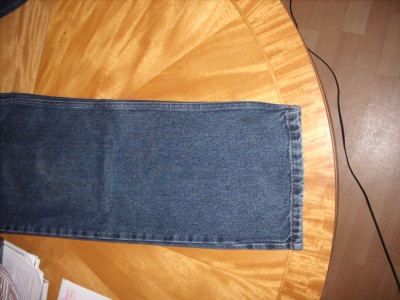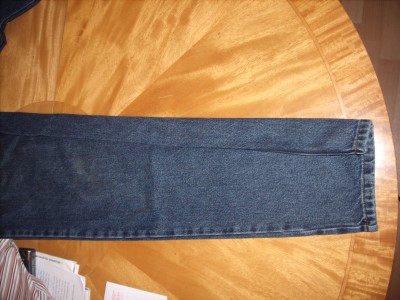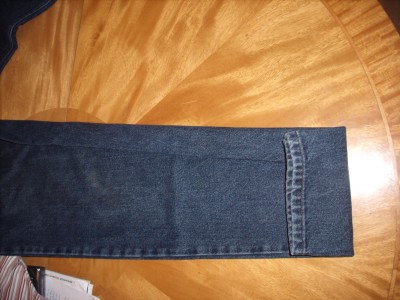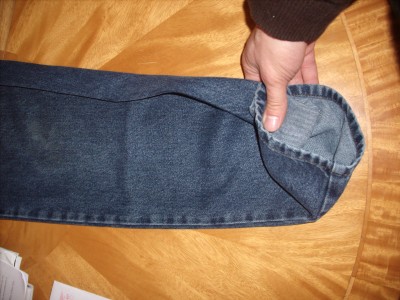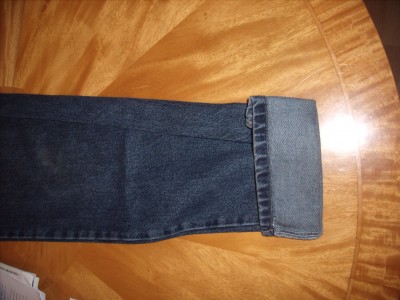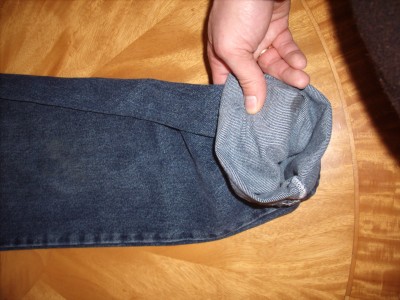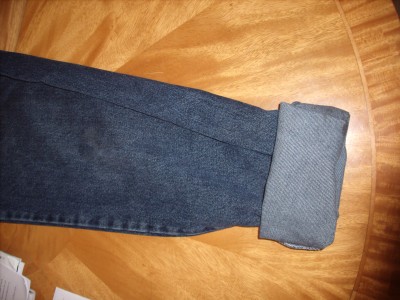Cold and dry; Non-bikers
February 3rd, 2012
This morning was the first “cold” morning at about 25 degrees. My face regretted the lack of protection, but otherwise I was nice and warm. It was one of those really borderline days, where a few degrees colder, or a little windier, I would have had to cover more skin. Still on the fixed gear bike.
Clothing: Heavy winter jacket, wool gloves, messenger bag, waterproof shoes.
As a transportation cyclist in a world (at work) nearly devoid of such people, there are often conversations about how awful or dangerous biking must be. I think the attention one draws may be enough to discourage some people; I know walking into the office covered by soaking wet rain gear gets no small amount of unwanted looks and remarks. (I happen to love biking in the rain, for the record.) On windy, stormy, cold, wet, slick, or even hot days there are constant questions “why would you bike?” A few months back my dad called me in a panic to tell me how dangerous cycling is, as a colleague’s son had received brain damage from a crash.
I haven’t found a good way to deflect these unwanted questions, but bland responses of “I take all the precautions” and “It’s a lovely day out” usually diminish the responses; attempting to explain the philosophy of vehicular cycling may be sometimes useful, but it is always painful. What does anyone else do to deal with the unwanted remarks garnered by your relatively banal choice of transportation?
Cool and Clear; Eyewear
February 2nd, 2012
This morning was a carbon copy of yesterday morning – 38 degrees, clear and dry. Yesterday evening, however, was downright spring-like. It was almost 60 degrees when I rode home, and I have the sweatiness to prove it. Once the temperature gets that high, you have to really start thinking about cooling: if I had thought harder about it, I would have rolled up my sleeves and untucked my shirt, and slowed down.The last part is clutch: if you want to get someplace presentable, add a couple minutes and ride slower. I would have also liked lighter shoes, but that was unreasonable to ask for.
Clothing: Heavy winter coat, messenger bag, waterproof shoes over my normal dress shirt & undershirt; cotton dress pants.
Yesterday’s post spontaneously generated a (small) discussion on eye wear. I know this usually gets short shrift on “what to wear” guides, but the consensus from our three data points were:
1. Eyeglasses are good in the winter: they keep your eyes warmer (especially in the bitter cold and wind) and they keep them protected from debris.
2. Fogging is inevitable. In my experience with ski goggles and eyeglasses, the important thing is to keep your face away from the glasses (good luck!) – facewear that directs warm air from your nose and mouth upward will cause immediate fogging. One other person contributed that he keeps the glasses down at the tip of his nose to get the same effect. Once fogged, I take the glasses off and wave them around: the moisture evaporates in a few seconds.
Many kinds of wipes that prevent fogging exists, and wikipedia tells me some home solutions exist for this purpose:
Home recipes
One method to prevent fogging is to apply a thin film of detergent, but this method is criticized because detergents are designed to be water soluble and they cause smearing.[5] Divers often use saliva,[6] which is a commonly known and effective anti-fogging agent.[7] Other home recipes exist, including the application of white vinegar with hot water,[8] or a mixture containing sudsy ammonia, alcohol and liquid dishwasher detergent .[9]
Some other tips I found on the web, which suggest saliva or shaving cream, vinegar, and shampoo. I’ll try to go out and try one of these (probably the shaving cream), and report back at a later date. (Perhaps when it’s actually cold enough to cause fogging!).
Warmer and dry; Chains
February 1st, 2012
Today is supposed to be very warm, so I scaled down from the winter coat to a sweater plus rain jacket. I won’t repeat myself on how the fixed gear causes me to run warmer than usual, but today was another case in point of overheating. The temperature wasn’t actually so high – 37 degrees – but it sure felt warm.
Clothing: Light sweater, waterproof windbreaker, waterproof shoes, messenger bag. Light cotton (?) biking gloves.
If you canvas ten bicycle-inclined people and ask them about maintenance, nine of them will talk about the chain (and the other one will be clever). It bears repeating that if you do any of the following things, you need to clean and oil your chain at least once a month, and probably more often.
1. Ride your bike more than twice a week
2. Ride in rain or snow, even once
3. Store your bike outside
4. Ride off road
As regular transportation cyclists, we all see, and then hear, those bikers who are crawling along, straining their muscles to go five miles an hour, the bike shrieking as though in pain, and the chain recently dredged from the hold of the Titanic. We love to blog about them. I really wanted to make pamphlets to hand to bikers inching up the Longfellow Bridge in spring explaining how to do it (if anyone’s interested, I have other informational ideas, although the whole medium of unsolicited advice is a little obnoxious). I’ll resist the desire to say more, except, clean your chain!
Cool and Dry; Tires
January 31st, 2012
Today was another uneventful winter commute. Dry ground (save the open fire hydrant on Cambridge Street in Beacon Hill), high 30s, nothing special to report. I took the fixed gear today because the forecast was nice. The lack of fenders (see, they’re useful even in fair weather!) made me nervous for my clothing through the aforementioned water on the street.
Clothing: Heavy winter coat, wool gloves, waterproof shoes. No rain pants; messenger bag.
True to form, the fixed gear made me ride harder than usual (I love the way it pushes you up hills!) and the messenger bag constricted me a little. I managed to break a sweat.
I haven’t pumped my tires the entire month. This is a luxury you have in the winter: air escapes much more slowly when the temperature is below 50 degrees. (I’m sure it has something to do with the rubber becoming more porous, but that’s a tire engineer’s concern.) In the summer, if you aren’t pumping the tires once per week, then you feel as though you’re riding on a wet sock.
The reasons to stay on top of tire pressure are for performance (avoiding “wet sock” syndrome) and for “pinch flat” prevention. I also think that tires which are generally puncture resistant (from road debris) also perform better at higher pressure as they can scatter the debris as you ride instead of flopping down on its sharp edges.
Cool and Clear; Bright Lights
January 30th, 2012
Although there were flurries when I woke up this morning, it was dry and clear when I actually left for work. A little wind and 37 degrees.
Clothing: Heavy winter coat, light biking gloves, waterproof shoes.
On my mountain bike, I carry a very bright light in case I get caught on the trail in the dark. While that didn’t happen this weekend, I did end up riding that bike home after dark, so I used it (in flashing mode) on the road. Wow, what a difference bright lights make. Normally, cars are aware of you with a bike light; with a super bright and flashing light, some actually get out of the way. On College Ave in Davis Square, I actually had a car move toward the center of the lane so I could get by more easily.
I can’t wait do get my home-made dynamo light out there: it is rated at 4 times the intensity of the “bright” mode from my mountain bike.
Wet, wet, wet; More Fenders
January 27th, 2012
I knew it was dreary outside when I left, but within five minutes it was an outright downpour. As I was waiting at a light (with three cyclists behind me, mind you), the next person in line says to me, “If I had known it would be like this, I would have taken the bus.” I scanned over his bike, a mountain frame with wide tires, and noted, “No fenders, huh?”
I first understood the need for fenders in wetter weather than this. It was fall and I had ridden to my dad’s house without sight of rain, and only a light fall coat for protection. On the trip home (late, perhaps midnight), the rain was just straight downpour; the bike sent a gritty spray of sand up my back and also into my face. The bearings in the chain received a very heavy sludge that slowed my riding despite my desire to get home as soon as possible. I later found sand inside my pants.
Needless to say, I bought fenders the next week and have never regretted it for a second. Only much later, in a different heavy downpour I was compelled to ride through did I learn the value of proper rain attire, but that’s a story for another time.
Today’s ride went quickly because it was engaging: 43 degrees and water cooling on my face kept my body temperature down while I steered around relatively heavy traffic.
Clothing: Same as yesterday, heavy winter coat, wool gloves, rain pants, waterproof shoes. I got some water running down my socks, and that annoying “is everything inside my coat wet?” feeling, but it wasn’t. I did wish I had a hood today, though. I was so drenched my coworker thought I looked like a character from a horror movie.
Wet and Cool; Traffic Laws
January 26th, 2012
There was a dusting of snow last night, so I begrudgingly went back to the commuter bike today. Temperature was 33 degrees, so a good temperature for my setup.
Clothing: Rain pants, waterproof shoes, heavy winter coat, wool gloves.
For some reason, whether to obey traffic laws on the bike is a contentious topic. I’ve found that moral questions aside, there’s little reason not to do so: you get to your destination at the same speed and without stress by stopping at lights.*
However, I think the reason many people do not wait for lights is simply a matter of habit and culture, and they justify these irrational behaviors with arguments about safety and convenience (which may have some validity in suburban conditions, but not in urban ones). On my route to work, I often take Hampshire Street in Cambridge to Broadway, make a left, and continue to the Longfellow Bridge. At that left turn, there is a phase that, in the morning, generally causes one to wait with no cars passing through the intersection for about twenty seconds. On some days, there will be cyclists piled ten deep waiting patiently for their signal, on others everyone will burn through that left turn with not a soul waiting. I will stop to wait, and cyclists pile up behind me (there is generally still space to go around me and go through the light, yet they choose to do so).
This experiment indicates to me that most bikers follow the lead of the person in front of them. I know that when I first started riding for transportation a few years ago in New York, I rode like the deliverymen and messengers I had watched all my life: cutting into intersections between speeding cars, and weaving between trucks and cars and riding in their blind spots. (That was a really stupid time.) I did get scared, and started researching safe riding behavior, and learned about taking the lane, waiting for lights, avoiding the door zone, and I changed my behavior
The point is that because there is no real cyclist education, observation of others is how people learn to ride in traffic. When there are more people intentionally misbehaving (and that’s what it is), there is a multiplier effect as others haplessly imitate them.
You don’t have to agree with me from reading this: go and watch the traffic patterns and see whether I’m right.
* I’m not going to pretend to be perfect here. At an empty intersection which I’m familiar with, I will go if I think it’s safe and it will save me time.
Clear and Cool; Roll Up Your Pants, Better
January 25th, 2012
The ride in today was just lovely. It was cool (38 degrees) but not cold; the pavement was dry; the traffic was light (har har). I rode the fixed gear today and boy was it fun. I forget how I have to resist the temptation to tear it up on that bike – I get into work all overheated.
Clothing: Heavy winter coat, gloves (although I took them off halfway through the ride), waterproof shoes. NO rain pants today (a winter treat!).
Every so often I’ll see someone riding along with an absolutely atrociously rolled up pant leg. The pants are crumpled the whole length, the bottom is balled into the back of their knee, and their bare leg is exposed to the cold. It gets the job done, but this method is uncomfortable, unsightly, and results in very wrinkled clothing after the ride.
Rolling up your right pant leg is a necessity (unless you have a chain guard, or you’re wearing shorts, duh), as it will keep the bike from at the least rubbing grease on your pant leg, and and at the worst from ripping a hole in the pants or causing you to lose control. (All these things have happened to me – see below.) If your bike is really dirty, it may behoove you to roll up the left one too (a lot of the cuffs on my left pant legs have black streaks from rubbing grit off the frame).
The proper way to roll up your pants (and shirt sleeves!) came to me by way of the military, which, you may know is a stickler for neatness. The key is not to just push the offending fabric out of the way, but rather to fold the excess into a flat, neat cuff. This is basically the same technique you would use if you were tight rolling jeans, and it’s easy with a little practice (best done with the clothes off you to remove some variables). I’ll explain how to do it standing over your clothes and you can extend it to when you’re wearing it.
1. Lay the pants flat on a surface, face up, with the seams on the side and the fabric smoothed out.
2. Fold the inseam over an inch. The amount you fold over can vary depending on the amount of taper in your pant leg.
3. Fold the bottom of the leg up 1-3 inches (depending on your preference; it is easier to do when you use more fabric).
4. With one hand (let’s say, your right) pinching the back of the pant leg and inside the fabric from step 3, gently form a cuff with your left hand with the remaining fabric by turning it inside out and smoothing around your right hand.
5. Repeat steps 3 and 4 one or two more times. Two rolls will give you a more secure roll.
If your pants are pretty snugly fitting, you don’t need to do step 2: the cuff will remain neat without gathering the extra fabric. When done properly, you can create a very neat roll which will not crease your clothing and will also keep your pants away from the chain.
* The worst chain chomping I’ve had was in Times Square in August 2010. It wasn’t the chain’s fault, per se, but it had similar effect. I was making a right turn on about 47th Street on my fixed gear, when an errant shoe lace on my left foot got wrapped around the crank. With every revolution (as I frantically backpedaled and slammed on the brake), my foot was bound tighter and tighter. When I came to a stop, my weight listed… left and I slowly tipped over. This being New York, nobody batted an eyelash at some biker falling over for no reason in the middle of the street. I picked up the bike and literally hopped to the curb to unravel my shoelace.
** The worst clothing-chain chomping I’ve seen was when my fiancee and I were riding on Cambridge Street near Harvard Square, totally flying along when her bike (also a fixed gear) comes to a screeching halt and she falls to the side. Her pant leg was totally caught inside the chain, and the tire was rubbed flat through the tread.
Spring Is Here (?); Bags
January 24th, 2012
I should announce in advance any time I have to wear a suit to work: it is highly correlated with weird weather. Often it’s a heavy storm or cold snap, but today it appears to be freakishly warm (46 degrees this morning).
Technically, wearing a suit is no different from wearing other clothing. However, for me it adds a few complications: the jacket (what to do with it, as it’s long and sticks out of coats), cleanliness (you don’t want to get grit or slush on that bad boy), and the shoes (I usually leave my shoes at my desk). If this were most any other season, I might consider just wearing everything. Since this is the Dirty Season (winter to the lay person), I wear my rain pants, any coat, my normal bike-to-work shoes, and pack the jacket and shoes in panniers.
Clothing: Rain jacket, rain pants, waterproof shoes. No gloves.
I got a little warm riding in despite the light clothing. The key is airflow. I already had the tie knotted, and the shirt tucked in; the rain clothes add extra constriction. However, the biggest factor that kept me from getting actually sweaty was the bag. Any kind of bag on your body (whether two strap backpack or a messenger bag) will effectively increase the temperature by at least 10 degrees. The reason is airflow, for two reasons. The first is that there’s no air whatsoever under the straps: your body tries to remove heat, and so it sweats and nothing can escape. This ends up soaking your clothing in weird patches. Second, the straps obstruct any air from circulating between your skin and the openings in your clothing (around your neck, arms, and maybe lower back), which raises your overall temperature. If I want to arrive someplace presentable, I go for panniers.
Since I’m recommending them, I’ll go ahead and say that most any pannier will work. I have Axiom Typhoon LX panniers because that’s what the store had when I urgently needed a bigger bag the night before leaving on a touring trip. (It turns out the saying is true that you will fill whatever size bag you have, however.) They’re dry bag style, totally waterproof, and a giant sack. That’s not ideal because whatever you need is inevitably on the bottom of the sack, however the waterproof property and tough material makes these a good buy.
Warmer and Slush; Take the Lane
January 23rd, 2012
Although we got a few inches of snow this weekend, the conditions this morning were pure winter slush. Mediocre plowing (the bike lanes are to guide plows to drop their snow, right?) was the word of the day, however warmer temperatures (mid 30s) also made for a very comfortable ride. It’s supposed to be in the 40s mid day today! Still no love for my studded tires.
Clothing: Sweater, rain pants, rain shell, waterproof shoes. I can’t find my normal gloves, so I picked up some nice cushy ski gloves. My hands have never felt so loved.
Today I chose to ride the Craigie Bridge, also known as the Science Bridge, into work. This is the more trafficked route of my two (Longfellow being the more local), and less protected. Cambridge Street in Cambridge is lovely until you reach McGrath Highway. Then the road goes from one lane each way with bike lanes into four lanes in in my direction, with turns, and no bike markings. In the bridge section, there are three lanes with one marked with Sharrows (those “bike lanes in the middle of the road”). This leg on McGrath is mercifully short, but quite intimidating, even as an experienced rider.
The light timings are such that once I make the turn onto McGrath, I always get stopped at the light where the road crosses Land Boulevard (which then turns into Memorial Drive, and also goes into Charlestown over the canal and train tracks, and under I-93). At this light, there’s always a drag race with a driver who is waiting in the rightmost lane – which narrows to 9 feet after the light. Normally I either hug the edge through the intersection and then edge in (ill advised, but it reduces the incentive to squeeze past me), or simply take the lane at the light (safer, but nerve wracking). Today, I had the pleasure of a driver trying to essentially squeeze past me in the 9-foot lane, which meant very close passing distance.
The moral of the story is that you have to be an assertive rider. The comedy of this particular stretch of road is that a biker taking the entire right lane has no impact on car speeds or volumes; by the time I reach the end of the bridge, I am at the back of the pack, and everyone is sitting waiting at the light (I then filter to the front and get to laugh). The upshot is that as a defensive rider taking the lane, you are not inconveniencing anyone, whatsoever. You are also riding much more safely by doing so.
